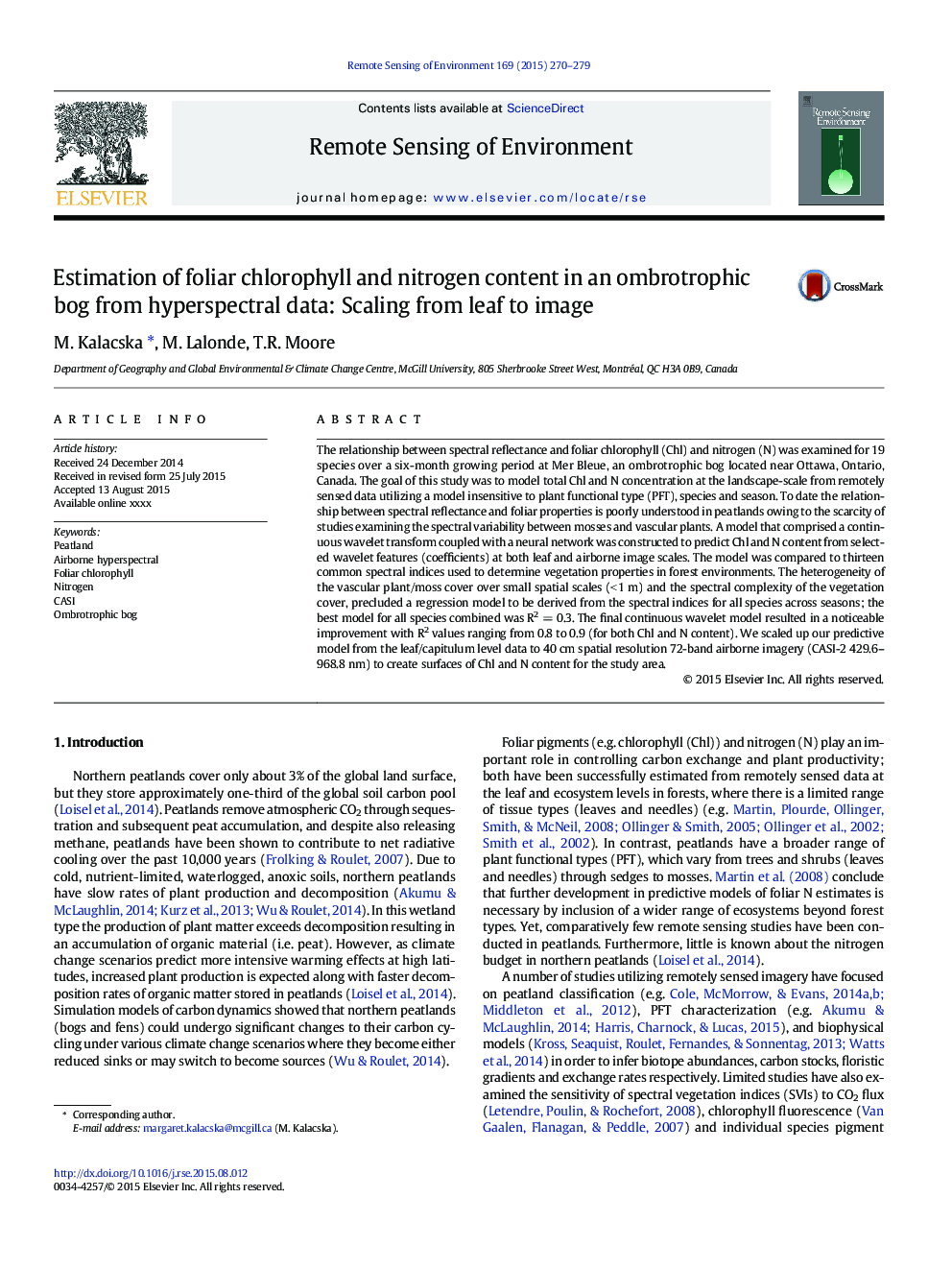| Article ID | Journal | Published Year | Pages | File Type |
|---|---|---|---|---|
| 6345830 | Remote Sensing of Environment | 2015 | 10 Pages |
Abstract
The relationship between spectral reflectance and foliar chlorophyll (Chl) and nitrogen (N) was examined for 19 species over a six-month growing period at Mer Bleue, an ombrotrophic bog located near Ottawa, Ontario, Canada. The goal of this study was to model total Chl and N concentration at the landscape-scale from remotely sensed data utilizing a model insensitive to plant functional type (PFT), species and season. To date the relationship between spectral reflectance and foliar properties is poorly understood in peatlands owing to the scarcity of studies examining the spectral variability between mosses and vascular plants. A model that comprised a continuous wavelet transform coupled with a neural network was constructed to predict Chl and N content from selected wavelet features (coefficients) at both leaf and airborne image scales. The model was compared to thirteen common spectral indices used to determine vegetation properties in forest environments. The heterogeneity of the vascular plant/moss cover over small spatial scales (<Â 1Â m) and the spectral complexity of the vegetation cover, precluded a regression model to be derived from the spectral indices for all species across seasons; the best model for all species combined was R2Â =Â 0.3. The final continuous wavelet model resulted in a noticeable improvement with R2 values ranging from 0.8 to 0.9 (for both Chl and N content). We scaled up our predictive model from the leaf/capitulum level data to 40Â cm spatial resolution 72-band airborne imagery (CASI-2 429.6-968.8Â nm) to create surfaces of Chl and N content for the study area.
Related Topics
Physical Sciences and Engineering
Earth and Planetary Sciences
Computers in Earth Sciences
Authors
M. Kalacska, M. Lalonde, T.R. Moore,
